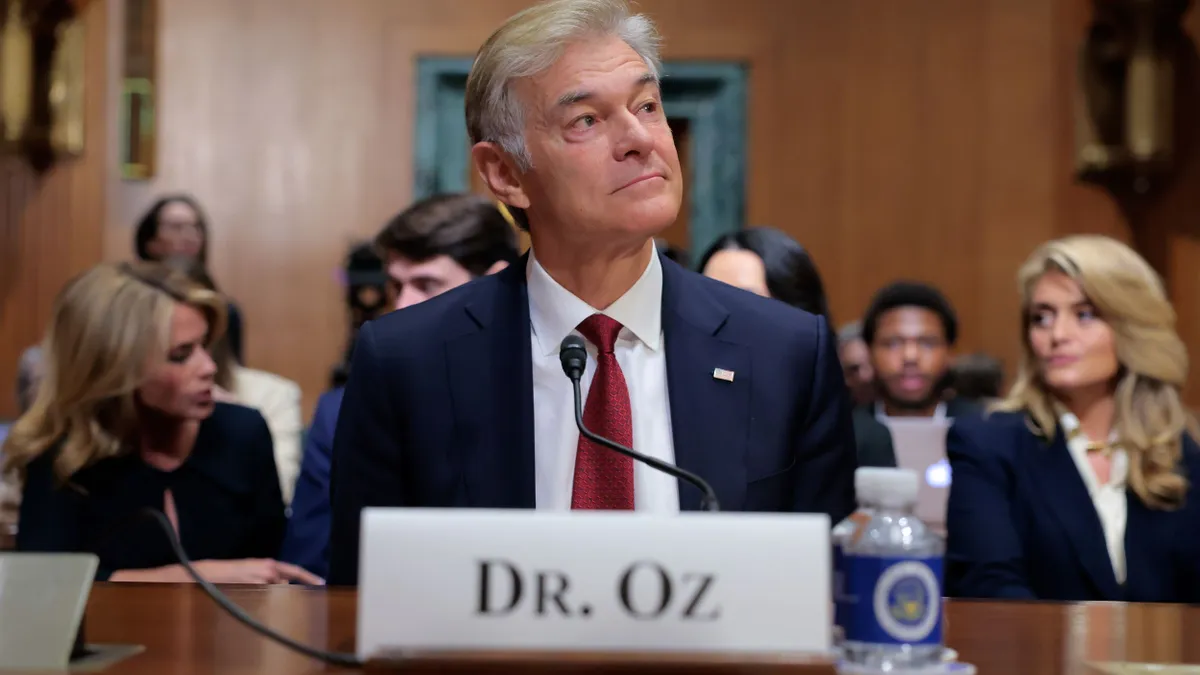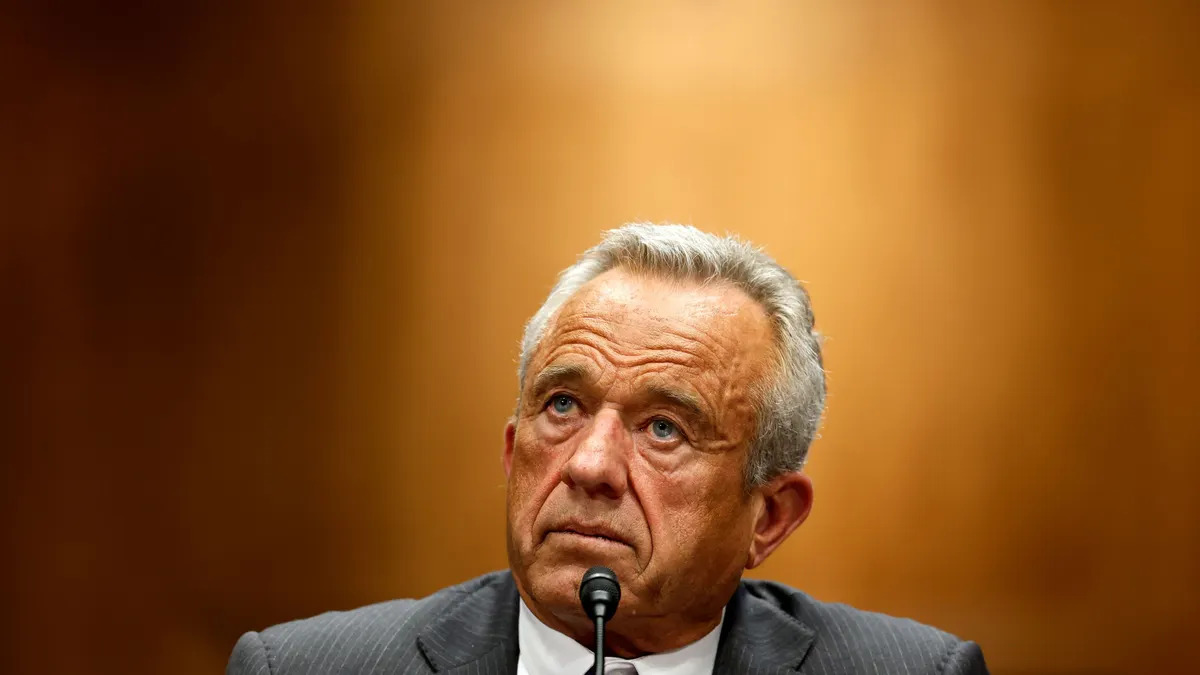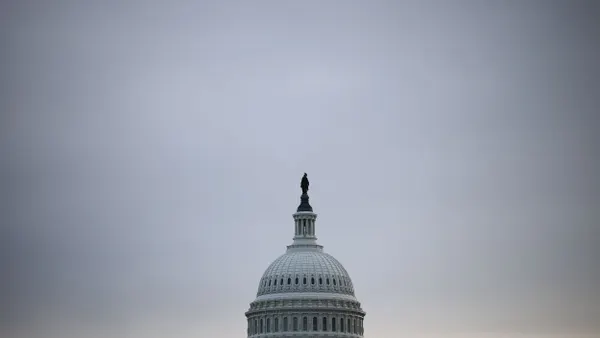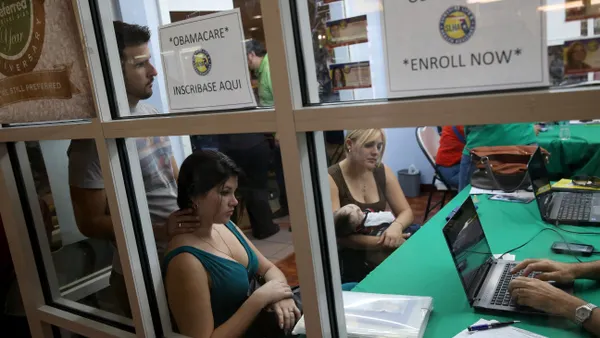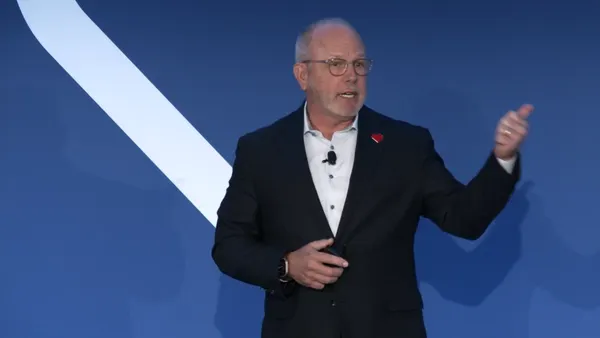Dive Brief:
- If Congress slashes funding for Medicaid, states that expanded coverage could have to find $44.3 billion in state budget cuts or new revenue to fund the program next year — hiking state spending by about 25.6% on average, warns a new report from the Urban Institute and Robert Wood Johnson Foundation.
- States could cover the shortfall by limiting Medicaid eligibility or reducing provider reimbursement rates, according to the report. However, some may choose to eliminate their expansion programs entirely.
- If all states choose to drop their expansion programs, nearly 11 million people risk becoming uninsured, with younger adults, older adults who aren’t yet eligible for Medicare, non-Hispanic white people, non-Hispanic Black people, and people in fair or poor health being at particular risk of losing coverage.
Dive Insight:
Since taking office, President Donald Trump has tasked Republicans in Congress with cutting the national deficit. On Tuesday, the House of Representatives advanced a budget resolution that directs the Energy and Commerce Committee to identify $880 billion worth of spending cuts, which could come from Medicaid.
Democratic Leader Hakeem Jeffries decried the resolution during a media availability Tuesday, saying the proposal “set in motion the largest Medicaid cut in American history.”
Republicans are weighing multiple cuts to the program, including slashing federal funding for states that expanded the Medicaid program under the Affordable Care Act.
Generally, the federal government funds between 50% to roughly 74% of a state’s Medicaid program, called the Federal Medicaid Assistance Percentage, according to the report. However, the federal government shoulders 90% of costs for newly eligible enrollees in the 41 states that chose to expand coverage, under a policy called enhanced FMAP. The Congressional Budget Office estimates eliminating the enhanced FMAP could reduce the federal deficit by $561 billion between 2025 and 2034.
Such cuts could be severely disruptive to states and possibly devastating to coverage, according to the report.
Twelve states — Arizona, Arkansas, Idaho, Illinois, Indiana, Iowa, Montana, New Hampshire, New Mexico, North Carolina, Utah and Virginia — have legislation that would trigger dropping Medicaid expansion if the enhanced FMAP is reduced.
The remaining 29 states would have a difficult choice: Scrounge up funding for the expansion or cut coverage.
States have limited options to cover the shortfall because they are generally prohibited from running a deficit, according to the report.
“Raising taxes would likely be highly unpopular, and options to reduce spending without cutting enrollment—such as reducing already low Medicaid provider payment rates—would be limited,” the report said.
North Dakota would have to hike its spending the most to fund the shortfall, increasing spending by nearly 50%. Indiana, Montana, Nebraska, Oregon, Colorado, Washington and New York would also see spending increase from about 31% to nearly 40%.
However, the alternative is cutting the expansion programs, which could leave millions uninsured. Washington, D.C., Iowa, Kentucky, Louisiana, Michigan, New Mexico, New York, Pennsylvania and West Virginia would see the largest increases in uninsured people if states roll back expansion programs, according to the report.
“Throwing millions of people, many of whom reside in rural states, off of Medicaid should be a nonstarter. The expanded Medicaid program has been around for more than a decade and has brought the number of uninsured people in America to historic lows,” said Kathy Hempstead, senior policy adviser at the Robert Wood Johnson Foundation, in a statement accompanying the report. “Rolling back Medicaid expansion would imperil the health of millions while crippling state budgets and economies.”
Healthcare industry groups have been hopeful they can prevail upon politicians the importance of keeping the Medicaid program intact.
In a statement Tuesday, American Hospital Association President and CEO Rick Pollack urged Congress to reconsider proposed cuts to the program, stating, “These are hardworking families, children, seniors, veterans, and disabled individuals who rely on essential health care services.”




